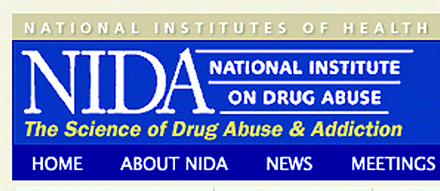Sites of interest on the World Wide Web
The Stories Behind the Drugs
In this issue of Molecular Interventions, Rebecca Anderson has written about the development of the antiepileptic phenytoin, commonly known by the trade name Phenytek or Dilantin. The interesting story behind the development of this valuable therapeutic puts into perspective the efforts of the groups of people who labored through the process of the drug’s development. The FASEB Web site (www.faseb.org) houses a wide array of valuable information for the bioscientist, and one fascinating collection of articles can be found in the Breakthroughs in BioScience section of the Web site (opa.faseb.org/pages/Publications/break-throughs.htm). These richly illustrated articles (in PDF) serve as easy-to-read references for the development and biology behind such agents as the antidepressants, clot-busting drugs, and anesthetics. In addition, some of the collection highlights basic techniques and the science behind them such as PCR. These rich articles are a valuable resource and a great set of teaching tools for a range of educational levels.

Angiogenesis
Inhibiting new blood vessel formation is one way to block a growing tumor’s blood supply. An article by Holaday and Berkowitz in the August 2009 issue of MI on the development of the drugs Endostatin, Avastin, and Thalidomide and their effect on blocking neovascularization. Information on testing, continued development, and clinical trial status of angiogenesis blockers is highlighted by the National Cancer Institute, at the Angiogenesis Inhibitors Therapy Web site www.cancer.gov/cancertopics/factsheet/therapy/angiogenesis-inhibitors. Here, information on angiogenesis as well as information on Stage III clinical trials of angiogenesis inhibitors of fourteen different types of cancers can be found. Additionally this site is a great source of information on the current state of treatment.

Select Science—Help with Those Difficult Purchasing Decisions
As a recently minted Assistant Professor, I have been experiencing the joy and stress of equipping a new research laboratory. One of the challenges is determining which products and instruments offer the best balance of value and reliability to stretch every research dollar. The Web site www.select-science.net provides some valuable resources, particularly reviews of instrumentation. While all centrifuges perform the same function, other instruments, such as thermocyclers differ greatly in features, reliability, and price. The product reviews on the Web site can provide some basis for helping to make those decisions, when first-hand experience with a particular piece of equipment is not available.
Free iPhone Apps for Students and Scientists
It is unquestionable that Apple Inc. has revolutionized the mobile computing device industry with the introduction of the iPhone a couple of years back. The ability to download programs for increasing the utility of the devices has been a major selling point. Some of these applications are geared for students and scientists, and are available for a free download from the Apple App Store, accessible through iTunes (www.apple.com/itunes). Molecules from Sunset Lake Software (www.sunsetlakesoftware.com/molecules) allows users to download, store and manipulate protein structure files from the PDB. The program is useful for discussing proteins with colleagues without the need for whiteboards or paper. Promega is a free app from the Promega Corporation, which allows easy access to biological/biochemical calculators, protocols and product information. ChemMobi is a tool to search and download chemical structures using names, formulas or CAS numbers. Although these apps may not be useful for everyone, they are available for free, and it’s pretty cool to be able to download and display high quality chemical and protein structures on the fly.
The Science of Addiction
In a recent issue of MI, an article by Gaval-Cruz and Weinshenker highlighted the use of medications, like disulfram (Antabuse), for the treatment of addiction. The article provides valuable insight into the mechanism of disulfram for the treatment of cocaine and alcohol addiction. Many additional resources on drugs of abuse, addiction treatment and the mechanisms of abused drugs are available through the National Institute on Drug Abuse (NIDA)’s excellent Web site, the Science of Addiction, at www.drugabuse.gov/drugpages/addiction.html. This site provides Research Reports, presentations, such as one on Addiction Science, and InfoFact sheets on abused drugs, health effects, prevention and treatment of abuse, and even statistical data on drug-use trends. The InfoFact sheets provide a handy reference that could also be valuable hand-out for drug use prevention exercises for students. Speaking of impressionable students, don’t miss the NIDA for Teens site (teens.drugabuse.gov), including the Sara Bellum Blog (teens.drugabuse.gov/blog), where much useful information can be obtained that is presented in a way that should appeal to teens without appearing too preachy. NIDA is to be congratulated for such an excellent Web site and set of resources!


- Copyright © 2009



